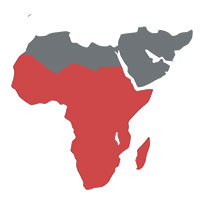Adaptation Finance
Su-Kim M | November 10, 2016.
Halfway through the first week of COP22 in Marrakech, Morocco, climate finance has already firmly cemented its place in the list of most-talked-about issues.
In the negotiations, countries have discussed the significance of the Paris Agreement’s early entry into force and how to increase ambition. The importance of ramping up ambition (particularly in the pre-2020 period, a mere three years away), the Doha amendment of the Kyoto Protocol having still not entered into force, and the notion of common but differentiated responsibility were also hot issues.
Perhaps most notably, though, the issue of climate finance was raised by a number of different country coalitions and regional groups, including the G77 and China, the Africa Group, Least Developed Countries Group and the Alliance of Small Island States. Alongside asking for increased ambition and commitment from developed nations, these groups all stressed the importance of ensuring that significant proportions of climate financing were going to adaptation as well as mitigation projects.
When comparing the spread of climate financing between the two, the concerns of these developing nations become abundantly clear. In 2014, of the US$391 million dollars made available to developing countries in climate finance, only 17 per cent was allocated to adaptation projects.
While the Green Climate Fund (GCF) directed over 50 per cent of its funding to adaptation finance in 2015 – and the recently released Climate Finance Roadmap to $100 Billion includes pledges from developed countries to strive for a balance in climate finance between mitigation and adaptation – a number of barriers need to be overcome before this balance can be achieved.
1) Private finance favours mitigation
Private finance tends to be predominantly spent on mitigation activities rather than adaptation, due to the highly-localised nature of adaptation measures and the market imperfections that result. As adaptation activities are broadly aimed at assisting communities, these activities have traditionally sat in the realm served by the public sector.
Adaptation activities are often immediately disadvantaged due to the reduced amount of funding made available to them. Financing public goods and activities with positive externalities can be difficult when market mechanisms do not yet exist, or are not relevant contextually. This predominantly excludes adaptation activities from accessing private forms of climate finance, which in 2014 made up 61 per cent of total climate finance.
Harjeet Singh, the global lead for climate change at ActionAid, says that there are no private companies providing adaptation finance as they don’t see any areas of business interest.
“That is why it is important to continue to highlight that adaptation requires public funding much more than [it needs] private finance.”
2) Optimism around role of mitigation finance to reduce of the need for adaptation
The logic is simple: increased funding for mitigation activities in the short-term will reduce the amount of adaptation money in the future. High levels of funding for climate mitigation indicates the presence of an optimism bias in regards to minimising (or even eliminating) the cost of adaptation in the future, not dissimilar to the optimism bias around the consequences of climate change. We have already passed the point where the consequences of climate change are completely unavoidable. Adequate levels of funding already need to be made available to developing nations to properly prepare them for the changes they face.
“The increasing numbers of disasters in recent years are a very clear indication that we’ve … entered into an era where adaptation is a reality on the ground,” says Singh. “No amount of mitigation can avoid a situation where we don’t have to invest in adaptation at all”.
3) Lack of perceived global benefits from adaptation programs
Mitigation initiatives project the image that there are a wide ranging number of benefits, extending beyond just the project itself. This includes everything from the knowledge and technology generated through to the replication or scaling possibilities across the world.
Given adaptation projects being very community-specific, activities in one region may be completely inappropriate and ineffective in another. Due to the localised and complex nature of climate change adaptation, the fees and transaction costs associated with adaptation projects can also be quite large, reducing the number of project that can be funded. This can make adaptation programs seem less attractive than their mitigation counterparts.
Finding a way to scale up climate finance across both areas of mitigation and adaptation under the Paris Agreement is one of the sought after goals for COP22. All eyes will be on developed countries to see how they rise to the challenge of funding action, and re-affirm their commitment to fighting climate change in the post-Paris era.













comment